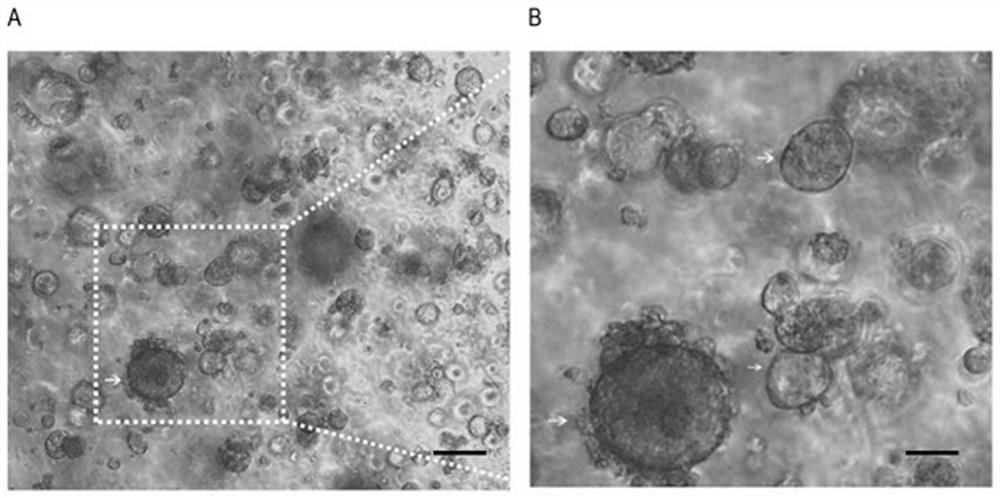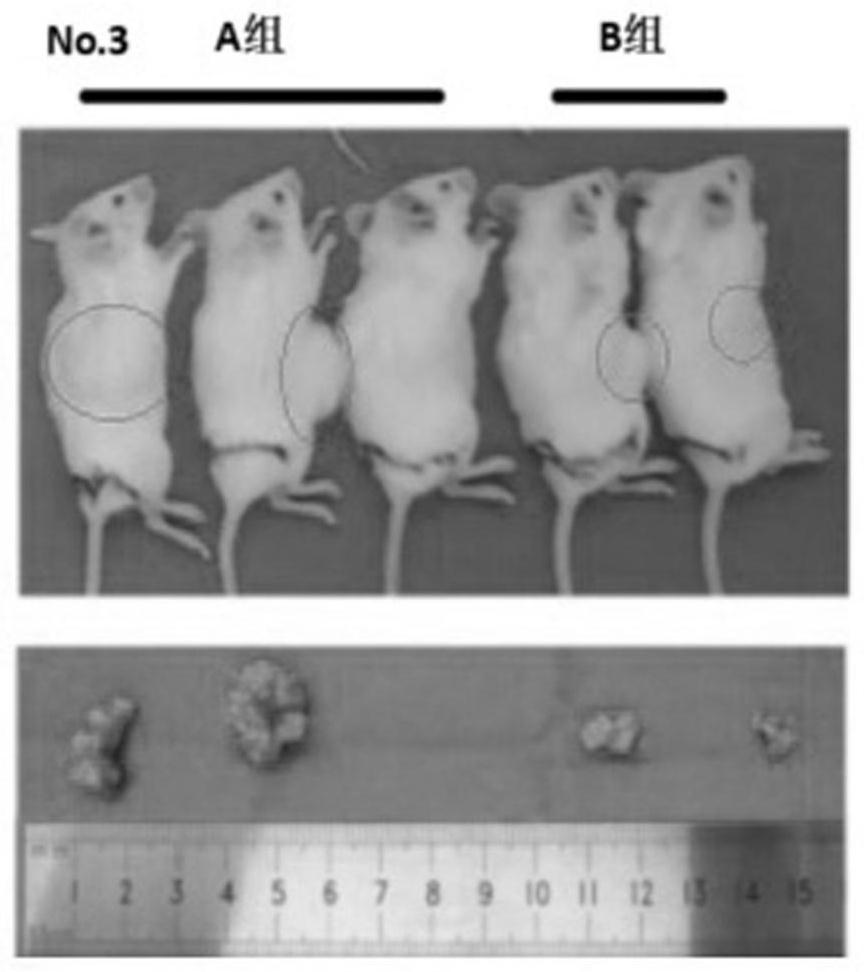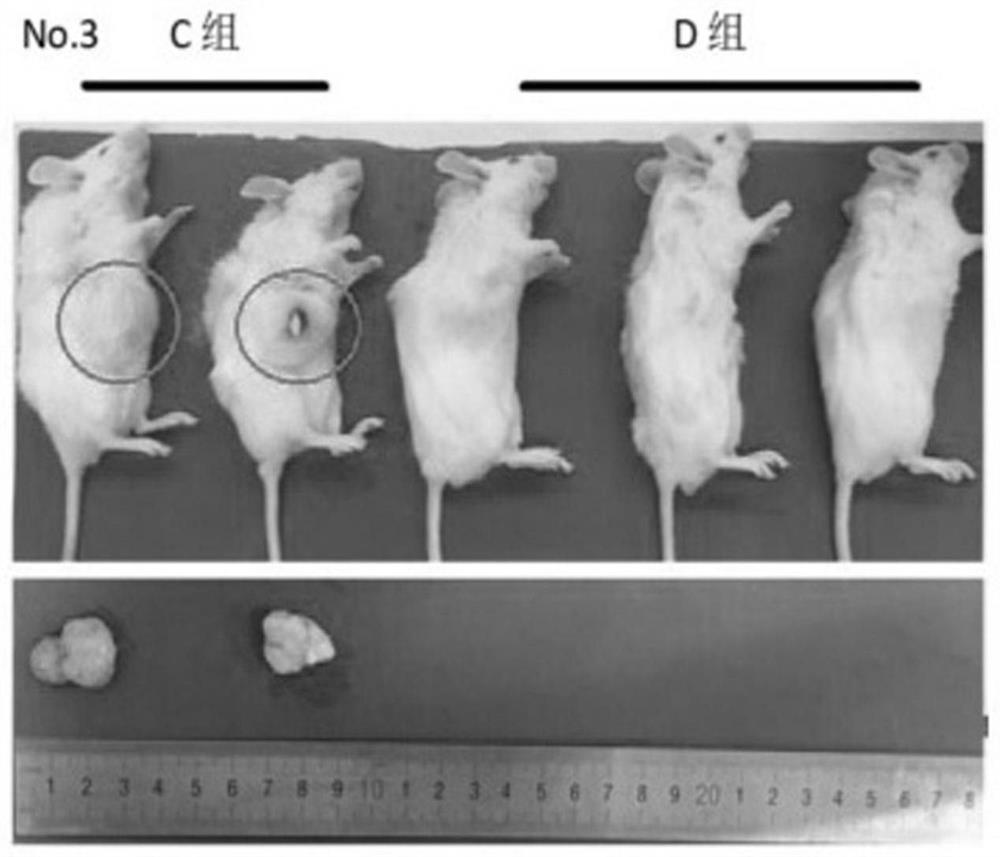A method for establishing a xenograft tumor model derived from colorectal cancer patients based on a temperature-sensitive biogel three-dimensional culture system
A xenotransplantation and colorectal cancer technology, applied in the field of biomedicine, can solve the problems of destroying tumor tissue structure, cell heterogeneity, gene mutation, etc., achieve the effect of reducing labor cost, simple preparation method, and enhancing tumor formation ability
- Summary
- Abstract
- Description
- Claims
- Application Information
AI Technical Summary
Problems solved by technology
Method used
Image
Examples
Embodiment 1
[0064] The results of a patient with colorectal cancer were cultured in a thermosensitive biogel three-dimensional culture system. The specific steps are as follows:
[0065] (1) Put the fresh colorectal cancer tissue (within 15 minutes from the body) surgically removed in a patient into a centrifuge tube containing 20ml DMEM (200U / ml penicillin / streptomycin), place it in an environment of 4°C, and transfer it rapidly Go to the ultra-clean table and set aside.
[0066] (2) Place the tumor tissue in a petri dish on ice, wash it with PBS until it is clean, and cut the tissue into 2-4mm 3 Fragments of different sizes were placed in a 15ml centrifuge tube (containing about 10ml of ice-cold PBS); centrifugation: 3min, 1500rpm; the supernatant was sucked off, and the tissue fragments were precipitated.
[0067] (3) Add 5ml of digestion solution, resuspend the pellet, shake vigorously, 37°C, 5% CO 2 Incubate in the incubator for 30min. After shaking vigorously again, add 5ml FCS (...
Embodiment 2
[0073] Based on the temperature-sensitive biogel three-dimensional culture system method compared with the subcutaneous embedding method of tissue pieces in 6 patients with colorectal cancer, a xenograft tumor mouse model derived from colorectal cancer patients was established. The establishment method is as follows:
[0074] (1) Put fresh colorectal cancer tissues (within 15 minutes from the body) of 6 patients into centrifuge tubes containing 20ml DMEM (200U / ml penicillin / streptomycin), place them in an environment of 4°C, and transfer them rapidly Go to the ultra-clean table and set aside.
[0075] (2) Place the tumor tissue in a petri dish on ice, wash it with PBS until it is clean, and cut the tissue into 2-4mm 3 Fragments of different sizes were placed in a 15ml centrifuge tube (containing about 10ml of ice-cold PBS); centrifugation: 3min, 1500rpm; the supernatant was sucked off, and the tissue fragments were precipitated.
[0076] (3) Add 5ml of digestion solution, resus...
Embodiment 3
[0083] Based on the three-dimensional culture system method of colorectal cancer cell biogel compared with the subcutaneous embedding method of tissue pieces in 6 patients with colorectal cancer, a xenograft tumor mouse model derived from colorectal cancer patients was established. The establishment method is as follows:
[0084] (1) Put fresh colorectal cancer tissues (within 15 minutes from the body) of 6 patients into centrifuge tubes containing 20ml DMEM (200U / ml penicillin / streptomycin), place them in an environment of 4°C, and transfer them rapidly Go to the ultra-clean table and set aside.
[0085] (2) Place the tumor tissue in a petri dish on ice, wash it with PBS until it is clean, and cut the tissue into 2-4mm 3 Fragments of different sizes were placed in a 15ml centrifuge tube (containing about 10ml of ice-cold PBS); centrifugation: 3min, 1500rpm; the supernatant was sucked off, and the tissue fragments were precipitated.
[0086] (3) Add 5ml of digestion solution,...
PUM
| Property | Measurement | Unit |
|---|---|---|
| diameter | aaaaa | aaaaa |
| diameter | aaaaa | aaaaa |
Abstract
Description
Claims
Application Information
 Login to View More
Login to View More - R&D
- Intellectual Property
- Life Sciences
- Materials
- Tech Scout
- Unparalleled Data Quality
- Higher Quality Content
- 60% Fewer Hallucinations
Browse by: Latest US Patents, China's latest patents, Technical Efficacy Thesaurus, Application Domain, Technology Topic, Popular Technical Reports.
© 2025 PatSnap. All rights reserved.Legal|Privacy policy|Modern Slavery Act Transparency Statement|Sitemap|About US| Contact US: help@patsnap.com



